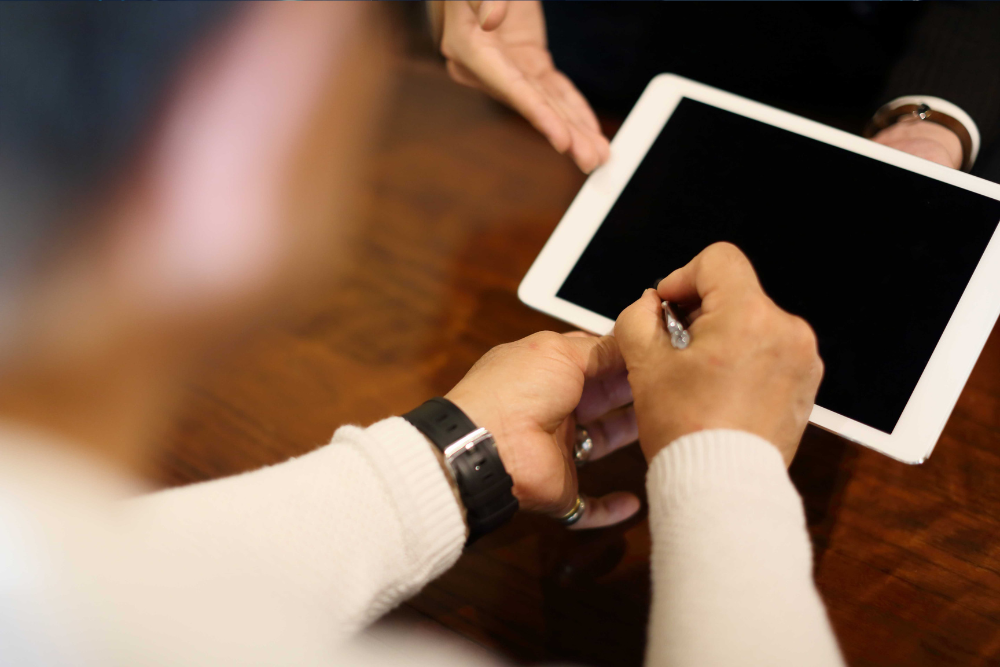E-signature and e-services

Electronic signatures
Electronic signatures deliver a way to sign documents in the online world, much like one signs a document with a pen in the real (offline) world. In the past, only hand-written signatures were legally valid. The Directive on a Community framework for electronic signatures (eSignatures directive), adopted in 1999, extended that recognition to electronic signatures. A reliable system of electronic signatures that work across the EU countries is vital for safe electronic commerce and efficient electronic delivery of public services to businesses and citizens. The eSignature Directive established the legal framework at European level for electronic signatures and certification services. The aim is to make electronic signatures easier to use and help them to become legally recognized within the EU Member States[1].
Definition of electronic signatures vary depending on the applicable jurisdiction. A common denominator in most countries is the level of an advanced electronic signature (an e-signature that meets the requirements set forth the EU regulation) requiring that:
- Authenticity: The message originates from the given sender and the sender and the sender can be uniquely identified.
- Integrity: Manipulation of the signature of the signed document can be detected immediately.
With the invention of the mobile phone signature, tools were designed to sign legally binding documents, invoices, and contracts electronically. It is possible to add an electronic signature to the PDF document quickly and securely, which is the legal equivalent of a handwritten signature. The authenticity of the signature and genuineness of the transmitted data can be verified at any time by sender or recipient.
Digital signature
Digital signatures present cryptographic implementations of electronic signatures used as a proof of authenticity, data integrity and non-repudiation of communications conducted over the internet. When implemented in compliance to digital signature standards, digital signing should provide end-to-end privacy with the signing process being user-friendly and secure. Digital signatures are generated and verified through standardized frameworks such as the Digital Signature Algorithm (DSA).
There are typically three algorithms involved with the digital signature process:
- Key generation – this algorithm provides a private key along with its corresponding public key.
- Signing – this algorithm produces a signature upon receiving a private key and the message that is being signed.
- Verification – this algorithm checks for the authenticity of the message by verifying it along with the signature and public key.
The process of digital signing requires that the signature generated by both the fixed message and private key can then be authenticated by its accompanied public key. Using these cryptographic algorithms, the user’s signature cannot be replicated without having access to their private key. A secure channel is not typically required. By applying asymmetric cryptography methods, the digital signature process prevents several common attacks where the attacker attempts to gain access through the following attack methods.
Biometric signature
Electronic signature may also refer to electronic forms of processing or verifying identity through use of biometric “signatures” or biologically identifying qualities of an individual. Such signatures use the approach of attaching some biometric measurement to a document as evidence. Biometric signatures include fingerprints, hand geometry (finger lengths and palm size), iris patterns, voice characteristics, or even retinal patterns. All of these are collected using electronic sensors of some kind. Because each of these physical characteristics has claims to uniqueness among humans, each is to some extent useful as a signature.
Electronic signature application. (Source: https://bit.ly/2ZdPQmX)

Five most popular e-sign services:
- eSignly is a leading e-signature solution for millions of users all around the world for the ease it provides in document signing and management. The app offers several features like in-person signing, scheduled signing, self-signing, team management, top-grade security, integration with popular work applications, audit trail etc.
- PandaDoc is available for both Android and iOS mobile platforms. The online software is an award-winning electronic signature software that has an easy-to-use user interface.
- Adobe Sign app is available on both the iOS and Android mobile platforms. Adobe is a common name in the graphics world and as such, it said to be one of the pioneers in eSign services. The software is feature rich giving the user the power to manage continuous workflows from any location or device.The app has both the digital and electronic signatures.
- SignEasy is another electronic signature software that is compatible with the Android and iOS platforms. SignEasy is not a heavy signature application because it offers a minimal user interface with the intention of making it easy to use. Signing using SignEasy accommodates self-signing, remote signing, as well as in-person signing.
- The RightSignature mobile application uses the Android and iOS platforms. This e signature app uses speed to impress its users, as documents come in faster when sending and receiving for signatures. With it, you can upload, format, and send documents in the shortest time possible.
Adding or removing an electronic signature from a Microsoft Word or Adobe
Using an e-signature line in a Word document, you can request information about the signer and provide instructions. When an electronic copy goes to the signer, this person sees the signature line and a notification requesting their signature. The signer can:
- Type a signature
- Select a picture of an inked signature
- Write a signature by using the inking feature on a touchscreen computer or other device
How to create a signature line in Word or Excel (Office 365 or 2019):
- In the document, place your cursor where you want a signature line.
- On the Insert tab in the Text group, click the Signature Line list. Then, click Microsoft Office Signature Line.
- In the Signature Setup dialog box, type the information that will appear beneath the signature line:
- Suggested signer: the signer’s full name
- Suggested signer’s title: the signer’s title, if any
- Suggested signer’s email address: the signer’s email address, if needed
- Instructions to the signer: instructions for the signer, such as “Before signing the document, verify that the content is correct”
- Select one or both of the following checkboxes:
- Allow the signer to add comments in the Sign dialog box: The signer can type in the purpose for signing.
- Show sign date in signature line: The date the document was signed will appear with the signature.
In addition, you can remove a signature by clicking the arrow next to the signature in the Signature Pane and then clicking Remove Signature.
Alternatively, you might require an electronic signature in a PDF document. See the next section for how to use e-signatures in PDF files.
Electronically signing a PDF file
Adobe’s Portable Document Format (PDF) is a common format for fixed-layout documents. Like Word, Adobe PDF has added a range of capabilities since it was introduced to the market in 1993. It’s now possible to electronically sign a PDF file for authentication.
If you’re a Windows user, you’re probably familiar with PDF readers. They are computer programs that allow you to open PDF files, that is, files with the .pdf file extension. The most popular option these days is Adobe Acrobat Reader.
To add an electronic signature to a PDF, follow these steps:
- Open the PDF file in Adobe Acrobat Reader.
- Click on Fill & Sign in the Tools pane on the right.
- Click Sign, and then select Add Signature.
- A popup will open. Select an option — Type, Draw, or Image.
- Click the Apply button.
- Drag, resize, and position the signature inside your PDF file.
E-services
E-service (or eservice) is a highly generic term, usually referring to ‘The provision of services via the Internet (the prefix ‘e’ standing for ‘electronic’, as it does in many other usages). E-services include all services and activities that are created by means of computers and offered and executed interactively via electronic media, such as the Internet.
E-services can be information and educational services such as e-education, e-learning, e-teaching, e-publishing, e-book, e-zine and e-catalog, procurement, trade and ordering services such as e-business, e-commerce, e-procurement, e-cash, e-shop, e-intermediary, e-auction, cultural and administrative services such as e-culture, e-government or e-vote, improvement of marketing, product or customer relationship services, electronic consulting services such as e-consultancy or e-advising, security-related services (e-security), production, scientific or logistic services. E-services will be used in many other applications in the future.
How do you use e-services?
To use the services, you must first register as a new user on top of any page.
- You will select the “Register” link and complete the required fields.
- On registration you will receive a confirmation that you have been registered, which will enable application for any government service online.

